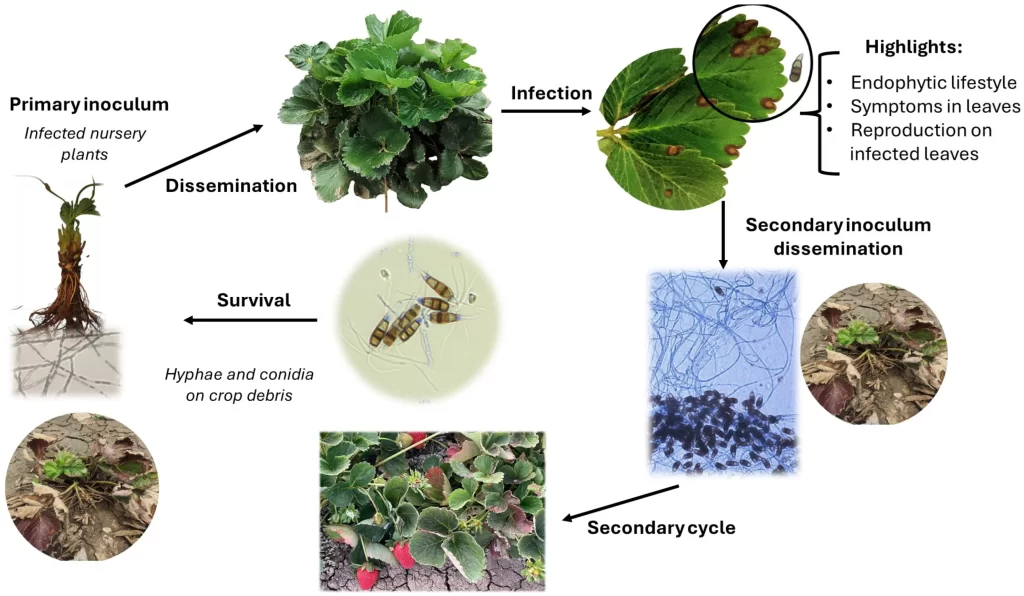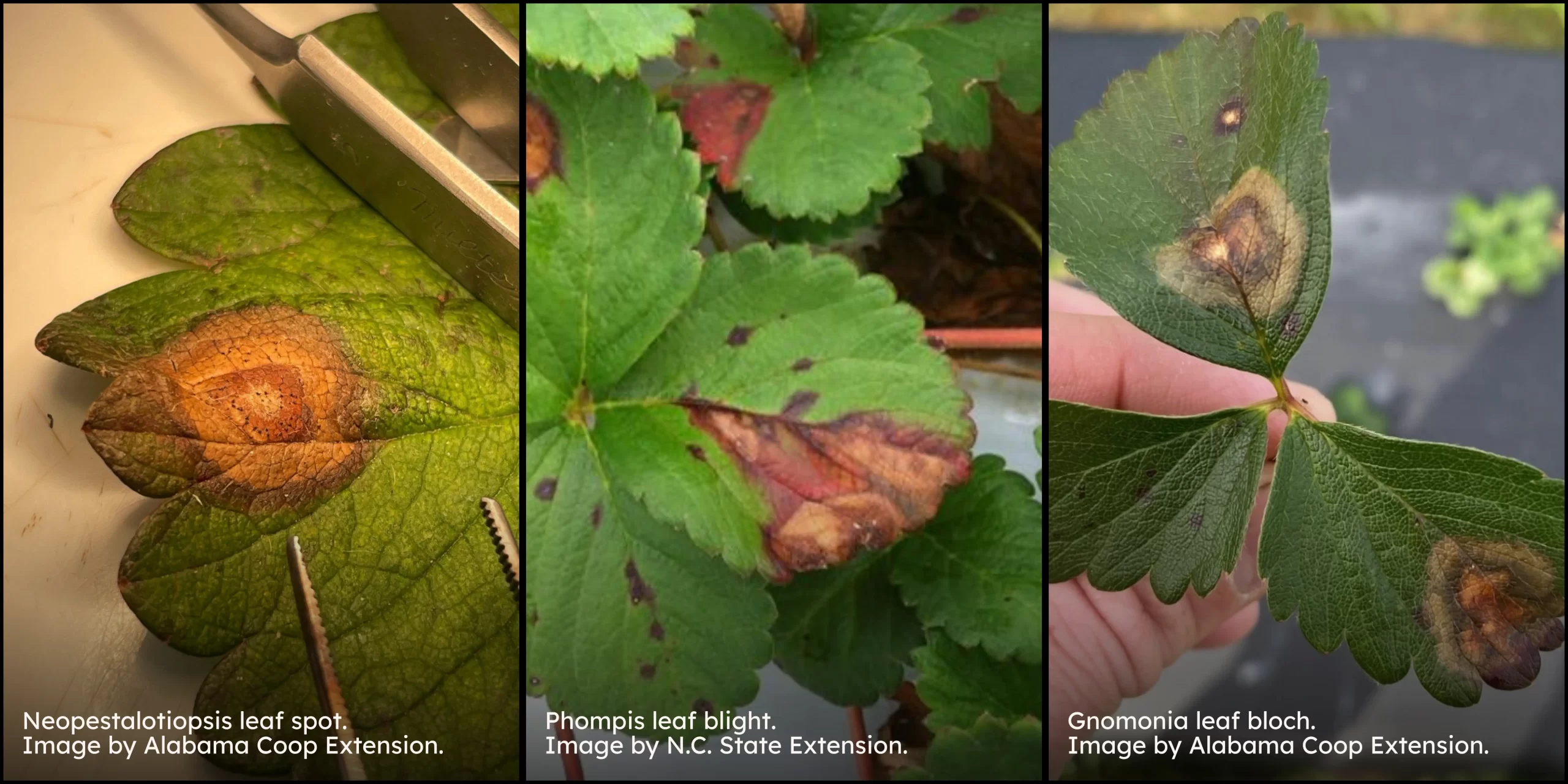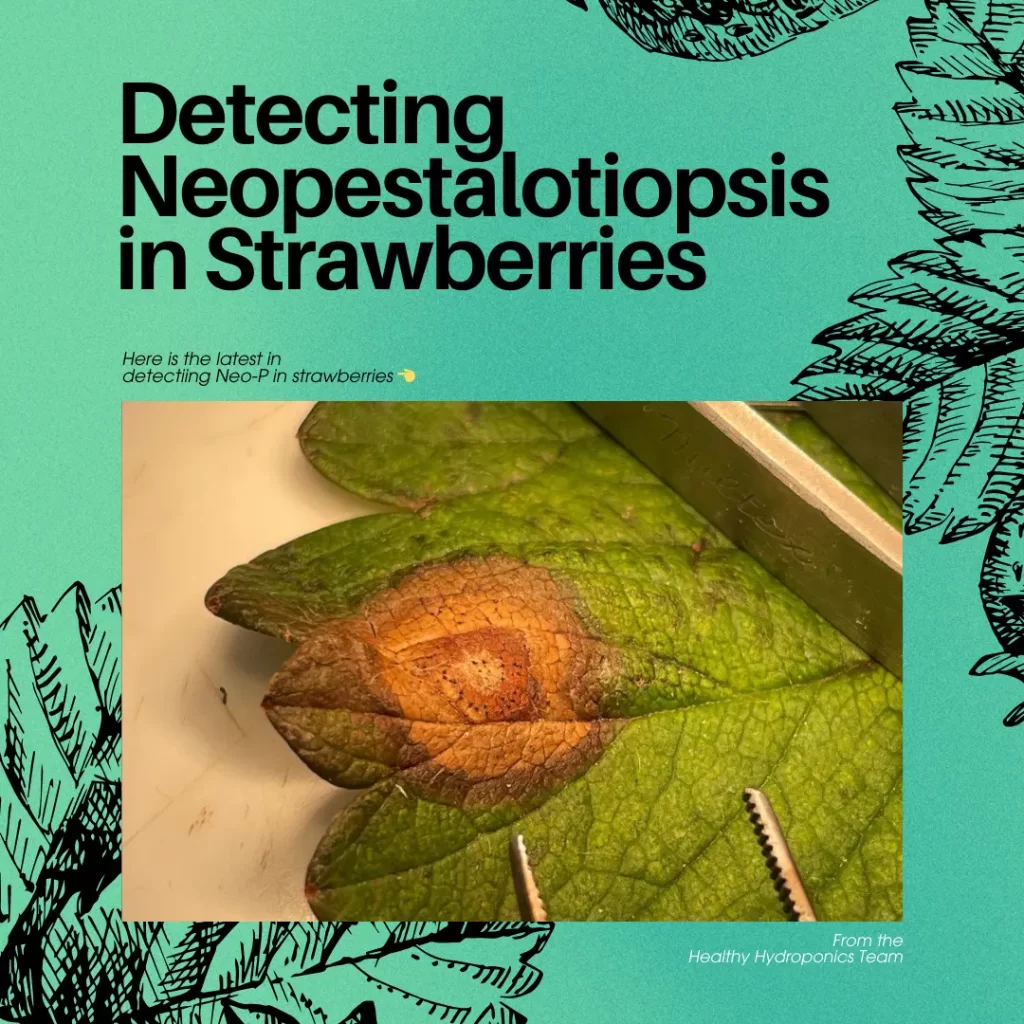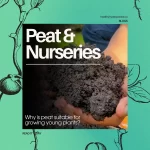Detecting Neopestalotiopsis sp. in Strawberries: From Traditional to Advanced qPCR Diagnostics
Introduction
Neopestalotiopsis, strawberries, and qPCR are words we can find together, in the same sentence, more often than ever before. Growers worldwide are increasingly concerned about Neopestalotiopsis, a type of fungi that includes both harmless and highly aggressive species. The emergence of a new, aggressive strain has caused devastating losses in strawberries, particularly in the southeastern United States and Canada.
This blog explores how detection methods for Neopestalotiopsis have improved from traditional approaches to faster qPCR technology. In addition, it highlights how our lab developed a quicker, more accurate test to identify this destructive pathogen.

The Threat of Neopestalotiopsis in Strawberries
Neopestalotiopsis species can infect multiple parts of the strawberry plant, including leaves, fruit, and crowns. Symptoms include:
- Leaf spots: Brown necrotic lesions with red halos, often mistaken for other fungal diseases like Phomopsis or Gnomonia.
- Fruit rot: Sunken tan lesions with black sporulation, leading to significant fruit loss.
- Crown rot: Wilting and plant death due to internal necrosis.
- To learn more about the microbe itself, read our Pathogen Profile on Neopestalotiopsis.

We provide great overviews of many agricultural microorganisms. Subscribe to stay updated!
Traditional Detection Methods
Historically, diagnosing Neopestalotiopsis relied on morphological and molecular techniques:
1. Morphological Identification
- The disease-causing microbes were identified based on spore characteristics (e.g., five-celled conidia with dark median cells and filamentous appendages).
- This method is labor-intensive and cannot tell between pathogenic and non-pathogenic species.
2. PCR/RFLP Assay
A 2023 study by Kaur et al. (published by the American Phytopathological Society) introduced a molecular method targeting the β-tubulin gene:
- PCR amplification using Bt2a/Bt2b primers.
- Digestion with the restriction enzyme BsaWI.
- Gel electrophoresis to visualize DNA fragments:
- Aggressive strains produce three bands (290 bp, 130 bp, 20 bp).
- Non-aggressive species produce two bands (420 bp, 20 bp).
While effective, this method requires multiple steps (PCR, enzyme digestion, gel electrophoresis) and is time-consuming.
Advancing Detection with qPCR Technology
Recognizing the need for faster diagnostics, our lab developed a quantitative PCR (qPCR) assay based on the single nucleotide polymorphism (SNP) reported in the Kaur et al. study. This SNP uniquely identifies the aggressive Neopestalotiopsis sp., allowing for highly specific detection without post-PCR processing.
In other words, we have a faster and more accurate way of detecting the new, aggressive strain Neopestalotiopsis sp. by using qPCR on infected strawberries.
Key Features of Our qPCR Method
- Speed: Key components are available within a day for the lab, compared to several days for PCR/RFLP. This allows our lab to provide analysis faster, not just by hours but by days.
- Specificity: Targets the SNP unique to the aggressive strain, avoiding false positives from non-pathogenic species like N. rosae.
- Quantification: Provides Cq values that indicate pathogen load, aiding in disease management decisions.
- Ease of Use: Eliminates gel electrophoresis and enzyme digestion steps.
Validation Results
Our qPCR assay was tested on symptomatic strawberry samples from multiple farms in multiple regions across Canada:
- Successfully detected the aggressive strain in samples (confirmed with PCR amplification method).
- Consistent Cq values confirmed reliability across replicates.
A Benefit for Growers Against Neopestalotiopsis
For strawberry growers facing the disease, qPCR detection for Neopestalotiopsis offers several benefits that directly address your concerns and improve your ability to manage this season’s crop effectively:
1. Speed of Diagnosis
- Current Problem: Traditional methods like PCR/RFLP take days and require multiple steps for the lab, delaying action while the disease spreads.
- qPCR Advantage: Results are available within a couple of days, allowing you to make immediate decisions about removing infected plants, adjusting irrigation schedules, or applying fungicides. This rapid turnaround could save my crop from widespread damage.
2. Accuracy and Specificity
- Current Problem: Symptoms of Neopestalotiopsis look similar to other diseases like Phomopsis, Gnomonia, or anthracnose crown rot. Misdiagnosis leads to wasted time and money on ineffective treatments. Other tests might also pick up on Neopestalotiopsis species that are not even disease-causing at all.
- qPCR Advantage: The assay targets a specific single nucleotide polymorphism (SNP) unique to the aggressive strain of Neopestalotiopsis. This ensures I’m addressing the right pathogen and not wasting resources on unnecessary interventions.
3. Early Detection
- Current Problem: By the time symptoms appear, the disease may have already spread extensively through my field.
- qPCR Advantage: Detects the Neopestalotiopsis in strawberries before visible symptoms develop, giving me a head start on containment strategies. Early detection allows me to isolate infected plants and prevent further spread.
4. Quantification
- Current Problem: I’m unable to assess how severe the infection is or whether it’s worth investing in aggressive treatments.
- qPCR Advantage: Provides quantitative data (Cq values) that indicate pathogen load. Knowing the severity of the infection helps me prioritize areas for intervention and decide whether fungicide applications are justified.
6. Peace of Mind
- Current Problem: Uncertainty about whether I’m dealing with Neopestalotiopsis sp. or another disease adds stress during an already difficult season.
- qPCR Advantage: Provides definitive identification of Neopestalotiopsis sp. in strawberries, reducing guesswork and allowing me to focus on proactive measures rather than reactive panic.
7. Making Every Dollar Count
- Current Problem: Wasted money on broad-spectrum fungicides, unnecessary treatments, or losing crops due to delayed action.
- By minimizing crop losses through early detection and targeted management, qPCR testing helps protect my margins in a season where every dollar counts. It’s an investment that pays off by reducing waste and maximizing yield potential.
Looking Ahead
As Neopestalotiopsis sp. continues to evolve, rapid diagnostics will play a critical role in protecting strawberry crops. Healthy Hydroponics remains committed to refining detection methods and collaborating with growers to minimize the impact of this destructive pathogen.
If you suspect Neopestalotiopsis sp. in your greenhouse or field, contact us today to learn more about our qPCR diagnostic services!
Resources To Read
- Development of a Molecular Tool for Identification of a New Neopestalotiopsis sp. Associated with Disease Outbreaks on Strawberry. https://pubmed.ncbi.nlm.nih.gov/36383989/
- Authors: Kaur et al.
- Published in: Plant Disease (2023)
- Summary: This study developed a PCR/RFLP assay using β-tubulin gene fragments and the restriction enzyme BsaWI to identify an aggressive Neopestalotiopsis sp. causing significant strawberry crop losses in the southeastern U.S. The method distinguishes the aggressive strain from other species like N. rosae and N. honoluluana, providing a critical diagnostic tool for research labs and clinics.
- Neopestalotiopsis Leaf, Fruit, and Crown Rot of Strawberry. https://content.ces.ncsu.edu/neopestalotiopsis-leaf-fruit-and-crown-rot-of-strawberry
- Authors: N.C. State Extension
- Published by: N.C. Cooperative Extension (2024)
- Summary: This extension site describes the symptoms, spread, and management of Neopestalotiopsis infections in strawberries, emphasizing its emergence as an aggressive pathogen since 2018. It highlights the difficulty of distinguishing symptoms from other diseases and recommends laboratory diagnosis and sanitation practices to mitigate outbreaks.
- Testing for the Pathogenicity of Neopestalotiopsis spp. in Strawberry F1 Hybrids of Ontario. https://atrium.lib.uoguelph.ca/server/api/core/bitstreams/d0462d98-71cf-41a9-832d-576fb04119c4/content
- Author: Justin McNally
- Published by: University of Guelph (Master’s Thesis, 2024)
- Summary: This thesis identified three Neopestalotiopsis species in Ontario strawberries (Neopestalotiopsis sp., Neopestalotiopsis rosae, and Neopestalotiopsis clavispora) and found Neopestalotiopsis sp. to be the most aggressive, causing 33% larger lesions than others. It also identified a resistant F1 hybrid line (20-047), offering potential for breeding programs.
- Prevalence and characterization of Neopestalotiopsis spp. on strawberry cultivars in the southeastern United States. https://smallfruits.org/files/2024/12/2024-R-01-neopestalotiopsis-strawberry.pdf or https://smallfruits.org/2025/01/survey-of-neopestalotiopsis-leaf-spot-and-fruit-rot-disease-in-the-southeastern-us/
- Authors: Jimenez Madrid et al.
- Published by: University of Georgia (Funded Research Report, 2025)
- Summary: A 2024 survey revealed that 55% of strawberry samples from southeastern U.S. states tested positive for aggressive Neopestalotiopsis. The study linked infected nursery plants to pathogen spread and emphasized molecular tools for accurate diagnosis, noting challenges with a second aggressive strain.
- Neopestalotiopsis spp.: A Threat to Strawberry Production and Management. https://www.mdpi.com/2311-7524/11/3/288
- Authors: Ávila-Hernández et. al
- Published in: Horticulturae (2025)
- Summary: This review discusses the biology, epidemiology, and management of Neopestalotiopsis, highlighting its impact on global strawberry production. It emphasizes integrated disease management strategies, including early detection, sanitation, resistant cultivars, and fungicide rotation.
- Detection and Species Differentiation of Neopestalotiopsis spp. from Strawberry (Fragaria × ananassa) in Florida Using a High-Resolution Melting Analysis. https://apsjournals.apsnet.org/doi/10.1094/PHYTOFR-03-22-0034-FI
- Authors: Rebello et al., Peres et al.
- Published in: PhytoFrontiers™ (2023)
- Summary: This study developed a high-resolution melting (HRM) assay to differentiate between the new aggressive Neopestalotiopsis sp., Neopestalotiopsis rosae, and other species based on β-tubulin gene polymorphisms. The assay offers rapid, accurate diagnostics for plant clinics, enabling timely disease management decisions for growers in Florida and beyond.
Disclaimer
The information we present in this blog is based on collating published peer-reviewed scientific literature, and sources we think are reliable. This is by no means an exhaustive review of pathogens. This blog gives a small glimpse of what is known about pathogens. We encourage growers to do more research on the pathogens concerning their crops and hydroponic systems. We are not plant pathologists; thus, the information presented should not be used as professional advice to treat pathogens or operate your system.
David Santos is the CMO of Healthy Hydroponics InnoTech




